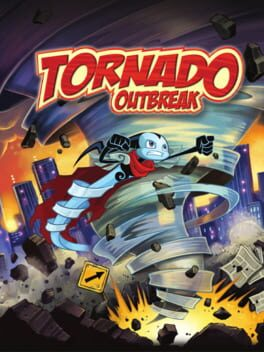Trivia Browser
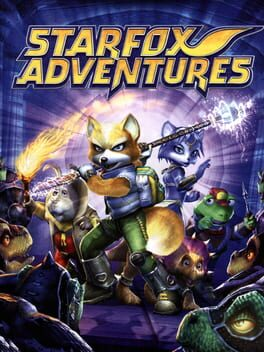
subdirectory_arrow_right Dinosaur Planet (Game)
▲
2
▼
 There's a fairly common misconception that the character of Krystal was originally meant to be a cat in Dinosaur Planet, prior to being redesigned as a vixen when the project was transformed into Star Fox Adventures.
There's a fairly common misconception that the character of Krystal was originally meant to be a cat in Dinosaur Planet, prior to being redesigned as a vixen when the project was transformed into Star Fox Adventures.The reality is that despite having a somewhat feline look, Krystal was always intended to be a fox as early as Dinosaur Planet, her original backstory even claiming that she belonged to the "Vixon Tribe" on planet Animus (Sabre and Randorn on the other hand belonged to the "Wolven Tribe", as they were both wolves). Former Rare artist Kevin Bayliss has stated multiple times that she was meant to represent a stylized arctic fox in particular.
Kevin Bayliss revealing Krystal's species as arctic fox on Twitter:
https://x.com/Kev_Bayliss/status/1568570218053500930
https://x.com/Kev_Bayliss/status/1567633642159017990
https://x.com/Kev_Bayliss/status/1786705955918405690
https://x.com/Kev_Bayliss/status/1786643909122146427
Dinosaur Planet story documents:
https://rarethief.com/dinosaur-planet/
https://x.com/Kev_Bayliss/status/1568570218053500930
https://x.com/Kev_Bayliss/status/1567633642159017990
https://x.com/Kev_Bayliss/status/1786705955918405690
https://x.com/Kev_Bayliss/status/1786643909122146427
Dinosaur Planet story documents:
https://rarethief.com/dinosaur-planet/
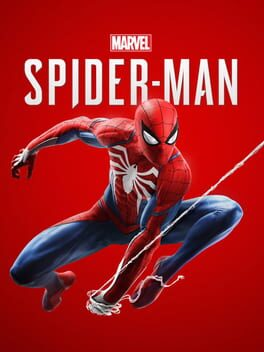
▲
1
▼
In a 2018 Syfy Wire interview with writers Christos Gage and Jon Paquette, they revealed that Silver Sable and Sable International were included in the game because they felt that there needed to be a presence or force in the overworld that added more stakes and tension to the game once the story events "became dire".
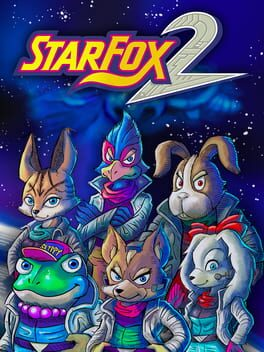
▲
2
▼
According to programmer Dylan Cuthbert (who reportedly help named the original pilots from the first Star Fox), one of the new pilots in Star Fox 2, Fay, was named after his childhood crush, a girl who lived next door to his grandparents' house. Although Fay, as well as Miyu, were never officially given proper surnames, Cuthbert has stated that in his head, he's always considered their full names to be Fay Sinclair and Miyu Swift respectively.
Dylan Cuthbert Reddit AMA comments:
https://www.reddit.com/r/nintendo/comments/8mu1pp/comment/dzqfnhr/
https://www.reddit.com/r/nintendo/comments/8mu1pp/comment/dzqe1ra/
https://www.reddit.com/r/nintendo/comments/8mu1pp/comment/dzqfnhr/
https://www.reddit.com/r/nintendo/comments/8mu1pp/comment/dzqe1ra/
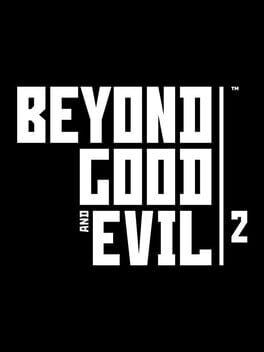
▲
1
▼
In September 2020, it was announced that the game's original director and series creator Michel Ancel would be retiring from the video game industry to focus on working for a wildlife sanctuary, but it was assured that development would continue without him. Later that month, the French newspaper "Libération" reported that several members of his team at Ubisoft Montpellier had accused him of acting abusive and unorganized, resulting in numerous delays and restarts since the game's announcement in 2008. This behavior was allegedly worsened by his simultaneous work on Wild (a big-budget game announced in 2014), preventing him from working on Beyond Good & Evil 2 with its team full-time. Although reports were submitted to company leadership as early as 2017, it was alleged that Ancel's relationship with Ubisoft co-founder Yves Guillemot prevented any major corrections from occurring until June and July 2020, when employees from all over the company came forward with sexual abuse and other misconduct allegations against high-ranking executives. Ubisoft would later comment that Ancel had not been directly involved in the game's development for "some time now" before his departure.
Ancel was interviewed as part of Libération's investigation. He claimed that Guillemot informed him that Ubisoft was investigating him in early August 2020, but claimed he was unaware that numerous team members blamed him for the game's development issues, and believed they were actually caused by long-term stress and burnout. He claimed he resigned on his own accord and that his only regret was not finishing the game sooner. The newspaper claimed that the interview took place on September 18th, the same day that Ancel and Ubisoft's statements about the departure were released. One week later when the report and interview were published, Ancel denied all of the allegations in an Instagram post, calling the articles "fake news" and accusing the newspaper of publishing them as soon as possible to conflate them with the earlier Ubisoft allegations in June and July, over a month before Ubisoft's investigation into him allegedly began.
Ancel was interviewed as part of Libération's investigation. He claimed that Guillemot informed him that Ubisoft was investigating him in early August 2020, but claimed he was unaware that numerous team members blamed him for the game's development issues, and believed they were actually caused by long-term stress and burnout. He claimed he resigned on his own accord and that his only regret was not finishing the game sooner. The newspaper claimed that the interview took place on September 18th, the same day that Ancel and Ubisoft's statements about the departure were released. One week later when the report and interview were published, Ancel denied all of the allegations in an Instagram post, calling the articles "fake news" and accusing the newspaper of publishing them as soon as possible to conflate them with the earlier Ubisoft allegations in June and July, over a month before Ubisoft's investigation into him allegedly began.
Libération report (first two articles in French):
https://www.liberation.fr/images/2020/09/25/jeu-video-les-coulisses-effarantes-d-un-blockbuster-geant_1800522/
Libération Michel Ancel interview:
https://www.liberation.fr/images/2020/09/25/michel-ancel-si-j-etais-reste-il-n-y-aurait-pas-eu-de-beyond-good-and-evil-2_1800385/
Michel Ancel departure article:
https://www.eurogamer.net/rayman-creator-michel-ancel-quits-video-games-industry-to-work-on-wildlife-sanctuary
Ancel departure Instagram post:
https://www.instagram.com/p/CFRbPpnqCxu
Accusations against Ancel:
https://www.vg247.com/report-michel-ancel-accused-of-abusive-disruptive-practices-on-beyond-good-evil-2
Ubisoft comment about Ancel's departure:
https://www.pcgamer.com/beyond-good-and-evil-creator-michel-ancel-quits-videogames-to-work-in-an-animal-sanctuary/
Kotaku article:
https://kotaku.com/report-beyond-good-evil-2-director-michel-ancel-left-1845184216
Ancel allegations denial Instagram post:
https://www.instagram.com/p/CFkrhX3KXu6/
Bloomberg article detailing roots of Ubisoft developer allegations before Ancel:
https://www.bloomberg.com/news/articles/2020-06-26/metoo-in-gaming-two-ubisoft-executives-placed-on-leave
https://www.liberation.fr/images/2020/09/25/jeu-video-les-coulisses-effarantes-d-un-blockbuster-geant_1800522/
Libération Michel Ancel interview:
https://www.liberation.fr/images/2020/09/25/michel-ancel-si-j-etais-reste-il-n-y-aurait-pas-eu-de-beyond-good-and-evil-2_1800385/
Michel Ancel departure article:
https://www.eurogamer.net/rayman-creator-michel-ancel-quits-video-games-industry-to-work-on-wildlife-sanctuary
Ancel departure Instagram post:
https://www.instagram.com/p/CFRbPpnqCxu
Accusations against Ancel:
https://www.vg247.com/report-michel-ancel-accused-of-abusive-disruptive-practices-on-beyond-good-evil-2
Ubisoft comment about Ancel's departure:
https://www.pcgamer.com/beyond-good-and-evil-creator-michel-ancel-quits-videogames-to-work-in-an-animal-sanctuary/
Kotaku article:
https://kotaku.com/report-beyond-good-evil-2-director-michel-ancel-left-1845184216
Ancel allegations denial Instagram post:
https://www.instagram.com/p/CFkrhX3KXu6/
Bloomberg article detailing roots of Ubisoft developer allegations before Ancel:
https://www.bloomberg.com/news/articles/2020-06-26/metoo-in-gaming-two-ubisoft-executives-placed-on-leave
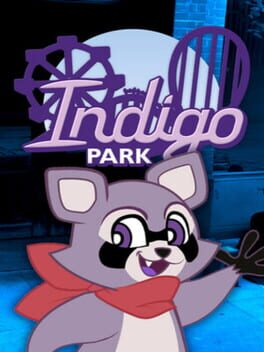
▲
1
▼
There is a miniature model of Lloyd the Lion located in the back of the Lloyd's Main Stage Theater area. According to the game's creator UniqueGeese, he couldn't remember why exactly it was there, but theorized that he was simply testing the model and forgot to remove it due to how small it was. He added that he likely won't remove it because "it took forever for people to find it."
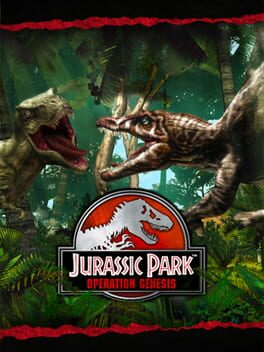
▲
1
▼
 The Kentrosaurus notably has a unique quirk in that it will panic if placed in the same enclosure with other large herbivores, barring some exceptions like the Stegosaurus. This is in contrast with the Prima guidebook that makes no mention of this behavior and even recommends to house the Kentrosaurus with all other herbivores in the game, which suggests that this was either a glitch or an oversight on the development team's part.
The Kentrosaurus notably has a unique quirk in that it will panic if placed in the same enclosure with other large herbivores, barring some exceptions like the Stegosaurus. This is in contrast with the Prima guidebook that makes no mention of this behavior and even recommends to house the Kentrosaurus with all other herbivores in the game, which suggests that this was either a glitch or an oversight on the development team's part.
Kentrosaurus article on JPOG Archive fan site:
https://lucca2951.wixsite.com/jp-genesis-archives/kentrosaurus
Jurassic Park: Operation Genesis Prima Official Guide (Pages 56-57 in the guidebook):
https://archive.org/details/Jurassic_Park_Operation_Genesis_Prima_Official_eGuide/page/n55/mode/2up
https://lucca2951.wixsite.com/jp-genesis-archives/kentrosaurus
Jurassic Park: Operation Genesis Prima Official Guide (Pages 56-57 in the guidebook):
https://archive.org/details/Jurassic_Park_Operation_Genesis_Prima_Official_eGuide/page/n55/mode/2up
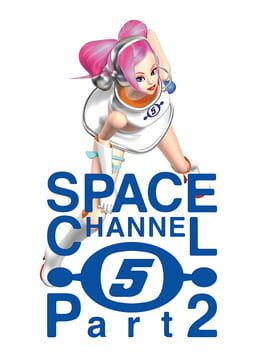
▲
1
▼
Several additional characters were planned to appear in the game, but were scrapped in order to keep the game's plot easier to understand. This includes the presence of a "Space Broadcasting Censorship Bureau", who would interrupt broadcasts that were deemed unsuitable (and whom Pine was originally going to be a member of alongside her backups Sexy 1 and 2, taking issue with Ulala's exposing outfit), a narcissistic reporter from Channel 777 named "Gold Kinpicano", and a different main antagonist tentatively referred to as the "Dark Dancing Demon Lord", whose goal was to invade the entire universe with dance.
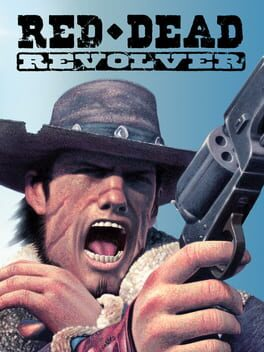
▲
1
▼
Red Dead Revolver originally began development with Capcom in 2000, when developer Rockstar San Diego was still known as Angel Studios. It started as "SWAT", a game with a four-person split-screen feature that allowed you to control four members of a S.W.A.T. team at once. Reportedly, after Capcom producer Yoshiki Okamoto watched the 1971 spaghetti western film "Blindman", the project quickly shifted to a western game, with "SWAT" now standing for "Spaghetti Western Action Title" before being renamed to Red Dead Revolver. After Angel Studios was acquired by Take Two Interactive in 2002 and renamed to Rockstar San Diego, they continued working with Capcom on the project until Capcom decided to cancel the game in 2003 due to a perceived lack of progress. Capcom eventually agreed to let Rockstar Games continue working on Red Dead Revolver the same year in exchange for having exclusive publishing rights in Japan.
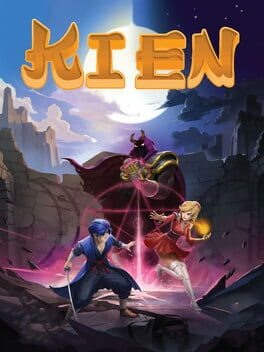
▲
2
▼
Kien was originally developed between 2002 and 2004 by AgeOfGames, a group of five Italian developers who had no prior experience making video games, aiming to be the first company in their country to develop a game for the Game Boy Advance. The game's release would end up being cancelled three separate times when multiple publishers picked up the game and then decided that releasing it would be too risky for sales. At the time, the game was completed and sent to gaming publications, with one known review appearing in the American magazine Nintendo Power in 2003. The game remained unreleased for over 20 years, but a prototype ROM of the game did leak online at one point. Game designer Fabio Belsanti would be the only member of the game's original development team to remain at AgeOfGames, who had shifted to developing educational games to stay afloat. Eventually, with the rising popularity in retro games and lowered cost to produce GBA cartridges, AgeOfGames was able to release Kien in 2024 both digitally and on physical cartridges through retro game publisher Incube8 Games. The game's release garnered attention for it possibly having taken the record for the longest delayed video game release in history, surpassing Duke Nukem Forever and Beyond Good & Evil 2 by taking 22 years to release.
DidYouKnowGaming video:
https://www.youtube.com/watch?v=8RuAKtb2too#t=2128s
Assorted pre-release gameplay of Kien from the early 2000's on IGN's YouTube channel:
https://www.youtube.com/watch?v=ZPijGVE9G1U
https://www.youtube.com/watch?v=X-opVqCKlYA
https://www.youtube.com/watch?v=BfRViZPwHAM
Incube8 Games trailers:
https://www.youtube.com/watch?v=Ti1Ul0y6ZcQ
https://www.youtube.com/watch?v=AuuIAX-N2SQ
Nintendo Power Issue #173 (November 2003) (Page 154 in the magazine):
https://archive.org/details/nintendo-power-issue-173-november-2003/page/154/mode/2up
Destructoid article:
https://www.destructoid.com/thrice-canceled-gba-game-kien-is-finally-getting-released-22-years-after-completion/
Engadget article:
https://www.engadget.com/possibly-the-most-delayed-video-game-in-history-is-finally-available-on-the-game-boy-advance-205150837.html
RPGGamer article:
https://rpgamer.com/2024/06/game-boy-advance-title-kien-released/
The Guardian article:
https://www.theguardian.com/games/article/2024/jul/04/kein-the-most-delayed-video-game-in-history-released-after-22-years
https://www.youtube.com/watch?v=8RuAKtb2too#t=2128s
Assorted pre-release gameplay of Kien from the early 2000's on IGN's YouTube channel:
https://www.youtube.com/watch?v=ZPijGVE9G1U
https://www.youtube.com/watch?v=X-opVqCKlYA
https://www.youtube.com/watch?v=BfRViZPwHAM
Incube8 Games trailers:
https://www.youtube.com/watch?v=Ti1Ul0y6ZcQ
https://www.youtube.com/watch?v=AuuIAX-N2SQ
Nintendo Power Issue #173 (November 2003) (Page 154 in the magazine):
https://archive.org/details/nintendo-power-issue-173-november-2003/page/154/mode/2up
Destructoid article:
https://www.destructoid.com/thrice-canceled-gba-game-kien-is-finally-getting-released-22-years-after-completion/
Engadget article:
https://www.engadget.com/possibly-the-most-delayed-video-game-in-history-is-finally-available-on-the-game-boy-advance-205150837.html
RPGGamer article:
https://rpgamer.com/2024/06/game-boy-advance-title-kien-released/
The Guardian article:
https://www.theguardian.com/games/article/2024/jul/04/kein-the-most-delayed-video-game-in-history-released-after-22-years
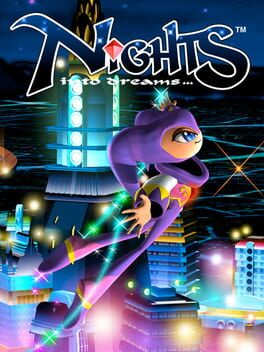
▲
2
▼
The character of NiGHTS was inspired by director Naoto Ohshima's travels across Europe and western Asia. In order to give his design as much universal appeal as possible, various regional styles were incorporated into it, namely Japanese, European, and American. In the context of the game, NiGHTS is part of every person's subconscious, and as such was designed to have an androgynous "dual male/female" appearance, but has been referred to with male pronouns in the same breath by Sonic Team.
Official Sega Saturn Magazine Issue #11 (Pages 38-41 in the magazine):
https://archive.org/details/Official_Sega_Saturn_Magazine_011/page/n37/mode/2up
https://archive.org/details/Official_Sega_Saturn_Magazine_011/page/n37/mode/2up

▲
2
▼
 There is an unused title screen in the Metal Slug bootleg game Terrifying 9/11 that suggests it was originally going to be released as a straightforward bootleg version of Metal Slug instead of a bad-taste cash-in on the September 11th attacks.
There is an unused title screen in the Metal Slug bootleg game Terrifying 9/11 that suggests it was originally going to be released as a straightforward bootleg version of Metal Slug instead of a bad-taste cash-in on the September 11th attacks.
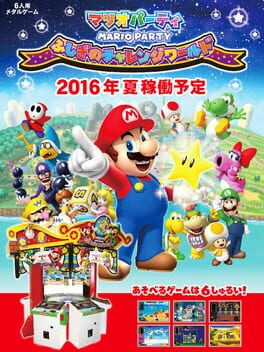
▲
1
▼
Although it was only released in Japan, there were plans for an international version of Mario Party: Challenge World slated for release in Spring 2018. A demo for an English-translated version was shown off at the 2017 Attractions Expo for the International Association of Amusement Parks and Attractions (IAAPA) using the Japanese version's six-player roulette design. However, this release date came and went with no further announcements. On May 30, 2018, the game's manufacturer Raw Thrills accidentally uploaded and quickly delisted a video on their YouTube channel showing the international version's boot-up process (using a Windows OS) with the game's title screen fully translated into English, before crashing. In October, photos were leaked to the arcade news blog Arcade Heroes revealing that the international version was still being tested, but sported a heavily revamped cabinet design that ditched the roulette and redesigned the game for only three players. This was most likely due to its original design as a roulette gambling game keeping it from being sold to most American arcades. After more radio silence and it missing IAAPA's 2018 Expo, Raw Thrills confirmed to Arcade Heroes in April 2019 that the game was cancelled, and its few prototype cabinets were sold off to select luxury entertainment centers. One confirmed location housing it as of April 2019 was the Tulsa, Oklahoma branch of Cinergy Entertainment.
Mario Party: Challenge World - IAAPA 2017 demo:
https://www.youtube.com/watch?v=8b9Fk7GKYUA
Reuploaded Raw Thrills bootup crash video:
https://www.youtube.com/watch?v=TTee-1A5U28
Arcade Heroes articles:
https://arcadeheroes.com/2018/10/09/mario-party-challenge-spotted-on-test-almost-a-year-after-reveal/
https://arcadeheroes.com/2019/04/27/newsbytes-repro-star-wars-yoke-marble-carnival-cosmotrons-unboxing-exa-arcadia-mario-party-updates/
https://www.youtube.com/watch?v=8b9Fk7GKYUA
Reuploaded Raw Thrills bootup crash video:
https://www.youtube.com/watch?v=TTee-1A5U28
Arcade Heroes articles:
https://arcadeheroes.com/2018/10/09/mario-party-challenge-spotted-on-test-almost-a-year-after-reveal/
https://arcadeheroes.com/2019/04/27/newsbytes-repro-star-wars-yoke-marble-carnival-cosmotrons-unboxing-exa-arcadia-mario-party-updates/
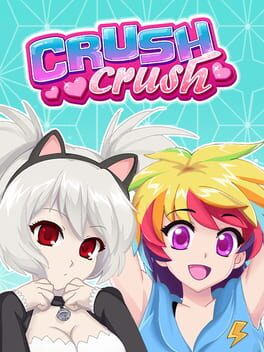
▲
1
▼
In 2023, the game's official Twitter account hosted a poll to decide the name of a character set to be added to a future "Beach Bash" event (the character was tentatively named "Crab-chan" on account of her being "literally a crab turned into a waifu"). The options given were all crab-based puns: "Crabitha" (a portmanteau of "crab" and "Tabitha"), "Shelly" (a reference to how many species of crab have shells), "Pearl" (a nod to how crabs are capable of creating "pearl sacs"), and "Crabigail" (a portmanteau of "crab" and "Abigail"). The name "Shelly" ultimately won, and she was added to the game as part of the Beach Bash Event 2024.
Initial poll:
https://twitter.com/CrushCrush/status/1685453078953361408
Shelly's addition:
https://twitter.com/CrushCrush/status/1806417216025538853
https://twitter.com/CrushCrush/status/1685453078953361408
Shelly's addition:
https://twitter.com/CrushCrush/status/1806417216025538853
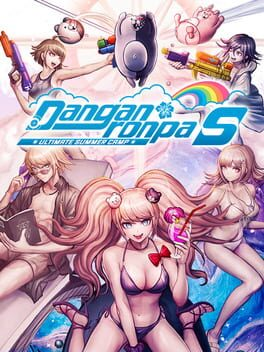
▲
1
▼
Much of the game's development was spent balancing the gameplay between Danganronpa S's various modes. One part of this was by making it so that the different characters and their rarities did not affect the core gameplay too much, as which characters players unlocked was heavily luck-based. According to director Shun Sasaki, balancing wasn't finished until much later in development, on account of it being improved bit by bit with new features implemented. Supposedly, the game's microtransactions were added in order to prevent frustration from players being unable to get their preferred characters.
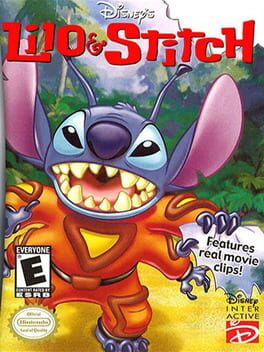
▲
4
▼
The game was heavily inspired by SNK's Metal Slug series, a favorite of the Digital Eclipse team. According to their president Mike Mika, Disney Interactive were initially fine with the prospect of a shooting game based on the movie, but when they were prepared to present the game to then Disney CEO Michael Eisner, cautions began to arise about the violence in the game, which was higher than expected. Due to a lack of time, the game had to be shown to Eisner as it was. Unexpectedly, he adored the game and lamented that the other licensed games based on Lilo & Stitch weren't adopting the same gameplay formula:
The Lilo & Stitch movie directors sent a signed poster to Digital Eclipse thanking them for the game.
"[...] we got this whole panic call from Disney and they are like, 'This is going to get cancelled'. And the next day, they called us back after the meeting and they were like, 'He LOVES it! He thinks it's the best product we're doing for Lilo & Stitch and he's really mad the other games aren't doing this.' It was really great and everyone was relieved."
The Lilo & Stitch movie directors sent a signed poster to Digital Eclipse thanking them for the game.

▲
1
▼
UPIXO in Action: Mission in Snowdriftland was created to serve as an Advent calendar with a winter theme. This is why the game was only available for a limited time, as the developers did not see much reason for the game to be playable all year round.
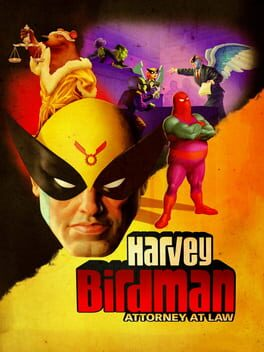
▲
1
▼
The only member of the voice cast of "Harvey Birdman: Attorney at Law" to not reprise their role in the game is Stephen Colbert, who voiced Phil Ken Sebben and Myron Reducto. These roles are respectively replaced by Stephen Stanton and Crispin Freeman.
Stephen Colbert not returning:
https://worthplaying.com/article/2008/2/13/reviews/48760-ps2-review-harvey-birdman-attorney-at-law/
Stephen Stanton as Phil Ken Sabben:
https://web.archive.org/web/20120830154253/http://www.behindthevoiceactors.com:80/video-games/Harvey-Birdman-Attorney-at-Law-The-Video-Game/
Crispin Freeman as Myron Reducto:
http://randomacc.net/system/reviews/harvey_birdman.shtml
https://worthplaying.com/article/2008/2/13/reviews/48760-ps2-review-harvey-birdman-attorney-at-law/
Stephen Stanton as Phil Ken Sabben:
https://web.archive.org/web/20120830154253/http://www.behindthevoiceactors.com:80/video-games/Harvey-Birdman-Attorney-at-Law-The-Video-Game/
Crispin Freeman as Myron Reducto:
http://randomacc.net/system/reviews/harvey_birdman.shtml
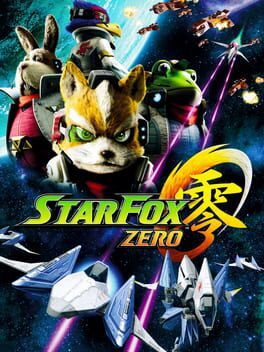
subdirectory_arrow_right Star Fox 2 (Game)
▲
1
▼
By scanning a Fox or Falco amiibo in Star Fox Zero, the Arwings and Walkers will be swapped out with 16-bit era models as seen in Star Fox and Star Fox 2. The old Arwing model's Charge shot does not lock on to targets, which reflects how they did not have a lock-on feature in Star Fox, but only in Star Fox 2 did they have a Charge shot. At the time of Star Fox Zero's release in 2016, Star Fox 2 remained unreleased, with only leaked beta builds being available, including one that allowed you to lock on to enemies with the Charge shot. The game would eventually be completed by Nintendo and released in 2017, but with this lock-on feature removed. Since Nintendo only showed Star Fox 2 to developers actively working on the series, it's believed that PlatinumGames noticed this feature's removal and referenced it in Star Fox Zero over a year before the game's release by making the old Arwings behave accurately to a version of Star Fox 2 that players did not know about.
